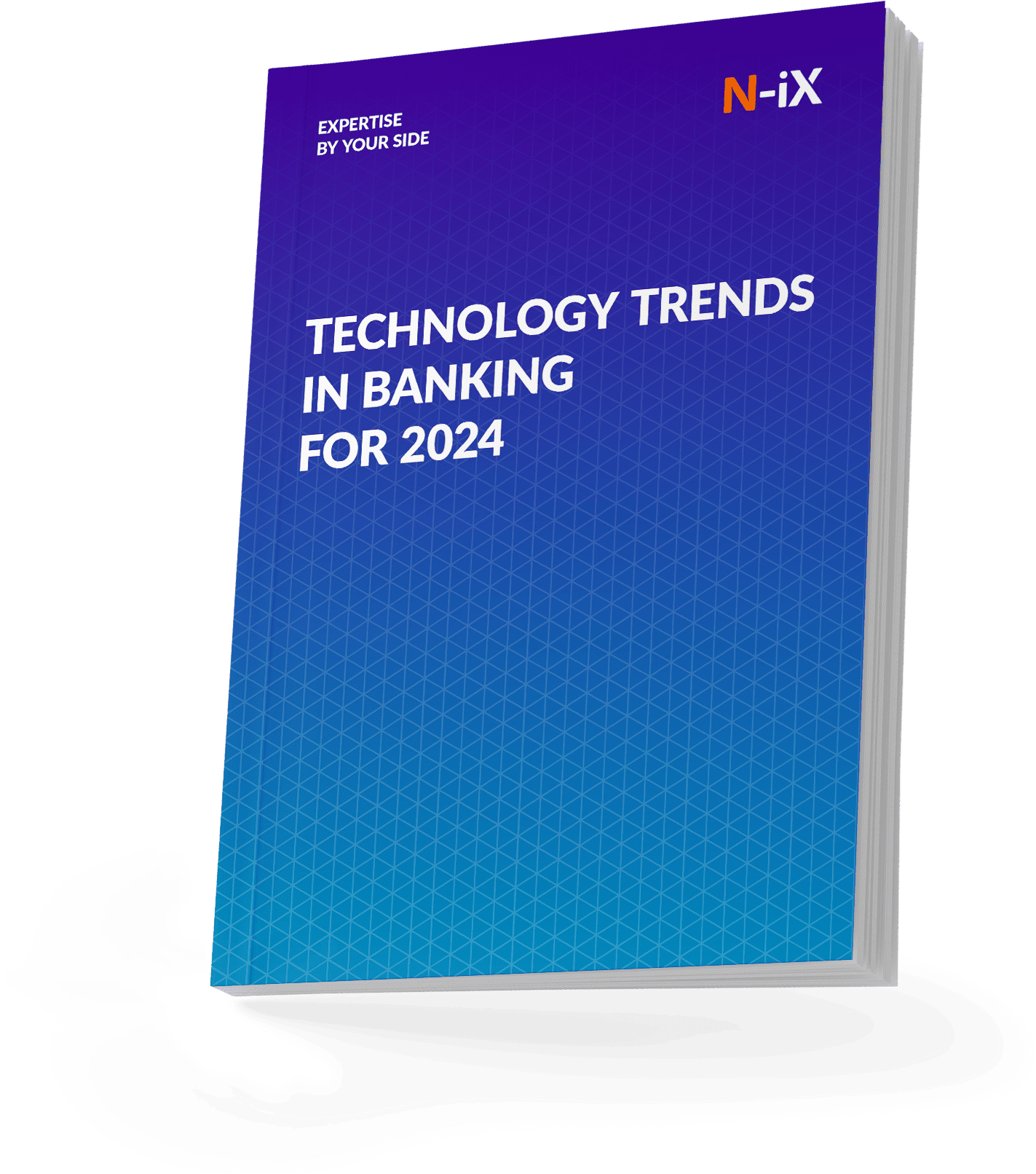The seamless and intuitive personalization of services like Netflix and Facebook are extremely convenient. Users have come to expect similar levels of personalization in all their digital interactions, including with their banks. 72% of customers say product offers are more valuable if personalized, and 65% say banks should help them discover suitable products [1]. Personalized banking financial software development is on the rise, with 86% of financial institutions stating it as a priority. This is not surprising; personalization in banking is a significant competitive advantage: 32% of consumers in the UK would think about moving to a different bank if it offered personalized financial assistance [2]. Let's explore how financial institutions of any size can develop a successful personalization strategy and implement personalization effectively.
When is personalized banking effective
Like the customers, banking executives are influenced by the capabilities they see in other industries. The expectation is thus of complex algorithms that take into account every minute behavior and bit of data. This approach is known as individualized personalization or one-to-one personalization, meaning that users are divided into groups of one—this represents the highest degree of personalization. Unlike tech companies, banks often face stricter regulations around the use of customer data. They also run legacy systems that are not easily adaptable to new technologies, and the need for significant investments in IT infrastructure and data analytics capabilities.

More importantly, the maximum ROI in banking is achieved with fewer degrees of personalization compared to industries that set expectations. One reason for this is that banks have a significantly lower number of products compared to retailers or streaming platforms. Whereas one personalization strategy is aimed at helping the user find the perfect movie for the evening out of a thousand released every year, the other points out the most fitting option out of a short list. Often, once basic personal or financial criteria are considered, there's only one product that is best for a customer.
However, this does not mean that banking cannot benefit from personalization; in fact, the benefits are enormous. Personalization in digital banking increases the ability to cross-sell and acquire customers by almost three times, and it leads to a 64% improvement in customer experience satisfaction [3].

Let’s understand the optimal degree of personalization in banking and how to build a personalization strategy to end up right on top of the utility curve.
Clearly defined priorities and objectives
The building of the personalization strategy begins with clearly defining the objectives of the project. It is important to ensure that personalization benefits the business in a tangible way and that each element can be built to work towards one coherent goal. These goals should frame implementing personalization as a part of the organization's overall mission and vision, such as improving customer satisfaction, increasing profitability, or enhancing competitive advantage.
Understanding the objective determines the required data and other parameters. For instance, if the goal is to reduce churn, the focus should be on identifying factors such as transaction histories, customer service interactions, and engagement levels. If the aim is to enhance cross-selling, insights into customer preferences, product usage patterns, and potential unmet needs become more relevant.
Audience segmentation
The objective of the project should logically follow the principle of audience segmentation. For example, if the goal is to reduce churn, the bank might segment customers based on their risk of leaving. At this point, the KPIs and desired actions should be clear: the aim is to move the user up the categories—from lower engagement levels to higher, from using fewer services to more.

With segments identified, the bank can tailor its products, services, and communications to the needs and expectations of each group. The best effect is achieved when personalization is conceptualized as a tool enabling flexibility in approaching different groups of people. Each variable, an element that changes based on who is looking at it, should remove one of the three barriers between the customer and the desired action:
- I don’t know why I should do it: Personalization can increase a customer's motivation to take action by making offers more relevant and appealing to their specific needs and circumstances. When customers know exactly why this product is beneficial in their situation, they are more likely to trust their financial provider and take advantage of more products.
- I don’t know if there are hidden downsides: Customers may hesitate to take action due to uncertainties or concerns. Personalized communication can help alleviate these anxieties by providing assurances, clarifications, and support tailored to the individual's concerns.
- I don’t know how to do it: Sometimes, the barrier is a matter of convenience or ease of use. Personalization can improve usability by simplifying processes and providing personalized guidance. Simplifying the interface to include only the options that are relevant to the customer can alleviate a surprising amount of mental strain on them and make their experience more pleasant.
Creation of more educational content
A powerful tool for removing the barriers to action is creating more personalized educational content. This can include targeted financial advice, product recommendations based on spending habits, and educational resources tailored to the individual’s life stage or financial goals.
Unfortunately, most banks underdeliver in this area: 48% of people surveyed in Britain do not trust their banks and believe their financial provider does not have their best interests in mind [4]. This distrust undermines the foundational customer-bank relationship, creating apprehension about engaging with financial products due to a lack of clear, personalized communication.
The flip side of this situation is that a few simple steps can give a financial institution a great competitive advantage. 65% of Gen Z and 61% of Millennials find assistance in improving their financial health very important [5]. Creating personalized educational content can help explain how specific products benefit a customer's demographic group, such as the advantages of specialized student accounts for students. This approach positions the bank as a partner invested in their customers' financial well-being, transforming a critical challenge into a strategic advantage.
How to implement personalization in banking
Based on the challenges and analysis of the most successful case studies, let’s look at the stages and best practices of implementing personalization banking:
Establish effective data governance
Personalized banking relies on high-quality, accurate data to tailor services to individual customers effectively. Data governance is a set of policies and processes that maintain data accuracy, ensure regulatory compliance, reduce redundancy, improve data retrieval times, and generally make it possible to take advantage of the vast data financial institutions hold.
The most common issue that needs to be addressed before implementing personalization in banking is data silos. They occur when different departments or sections of a bank store data separately, leading to fragmented and inaccessible data across the organization. This fragmentation hinders the bank's ability to gain a holistic view of each customer, which is essential for personalization.
Read more: Data governance in banking and finance
Respect customers’ privacy
We all know that our data is being collected online, but personalization brings this fact to light and makes customers actively aware of it. Personalization solutions walk a fine line between being helpful and pleasant and making customers feel deeply unsettled and exposed. The key difference lies in how the customer shares this data. Only 29% of customers are ready for personalization, which utilizes all the data the bank de facto processes about them [6]. 45% of customers say they want to make a decision to share their information and have control over how it’s used.

Ensure effective communication between stakeholders
According to Dynamic Yield, personalized banking projects suffer from significant discrepancies and miscommunication between the middle management and the C suite. 39% of the executives who believe their organization has a dedicated team supporting personalization are mistaken [7]. In various other aspects, the C suite overestimates the organization’s maturity of personalization by two to five times compared to the evaluation of the middle management. This discrepancy might stem from overly optimistic assessments, insufficient feedback loops, or a lack of direct involvement with the teams executing personalization strategies. The miscommunication leads to a lack of accountability, unrealistic expectations of timelines, and the lack of resources needed, which all negatively impact the organization’s ability to implement efficient banking personalization projects.
In essence, ensuring effective communication between stakeholders is about aligning perceptions, expectations, and actions across the organization.
Outsource personalized banking development
When it finally comes to developing a solution, banks implementing personalized services face the dual challenge of attracting the right talent and managing limited IT budgets. About 47% of banking CFOs report difficulties in recruiting qualified developers [8]. For financial institutions facing these obstacles, outsourcing development can be the best choice. It provides quick access to professionals with both industry and specific tech expertise, bypassing the need for extensive training and long recruitment processes while also reducing operational costs.

Partnering with companies like N-iX provides financial institutions with a direct connection to a large pool of developers experienced in projects ranging from the modernization of existing solutions to comprehensive digital transformations. N-iX has over 300 tech experts with financial services domain knowledge and over 200 data experts and has delivered over 250 banking projects. Our tailored solutions and banking software development services address the challenges and opportunities that banks face, helping them get lasting value and maximize their investments.
Create data-driven testing scenarios
Data-driven testing is a foundational element in the successful implementation of personalized banking solutions. It involves test cases and procedures using varied, real-world data to validate and verify personalized banking systems' functionality, performance, and reliability. This is how the decision-makers can see if the project is on the right path. Data-driven testing includes:
- Variety of data sets: These scenarios utilize a comprehensive range of data reflecting the diverse customer base of a bank. This includes demographic information, transaction histories, browsing behaviors, and more, to simulate different user interactions with the banking services.
- Real-world simulation: By feeding these varied data sets into the banking systems under test, banks can simulate real-world operations and interactions. This helps in assessing how well the personalization algorithms and processes function across different customer profiles.
- Automated and manual testing: Data-driven testing can be automated to run thousands of scenarios that would be impractical manually, although manual testing is also employed for cases requiring human insight. This combination ensures thorough coverage and validation.
The results from these tests feed back into the development process, allowing for continuous refinement of personalization algorithms and customer interaction strategies.
Wrap up
Banks do not need to compete with social media or retail platforms in their personalization capacities; straightforward customer segmentation available to all financial institutions already makes a big difference. An effective personalized banking solution creates flexibility in engaging with each customer, significantly boosting important KPIs, but most importantly, it improves the ability to communicate efficiently with customers. It alleviates anxiety and uncertainty by speaking in a manner that resonates with them personally, helping them foster their financial well-being and establishing a foundation of trust between the bank and its customers.
WHITE PAPER
Stay ahead in banking: explore top 6 tech trends shaping the industry in 2024.


Success!

References:
- The State of Personalization Maturity in Financial Services 2023, Dynamic Yield at XP2 talks
- Banking is getting personal, Tink 2023
- Unlocking Hyper-Personalization At Hyper-Scale, Forrester 2023
- Low trust amongst banking customers as recession looms, GFT 2022
- Consumers Expect Financial Advice: Banks Are Falling Short, The Financial Brand 2022
- How Banks Can Unlock Quick Wins And Lasting Benefits Through Smart Personalization, Blend & Forrester 2022
- Dynamic Yield at XP2 talks
- CEO and Senior Business Executive Survey, Gartner 2022
Have a question?
Speak to an expert





